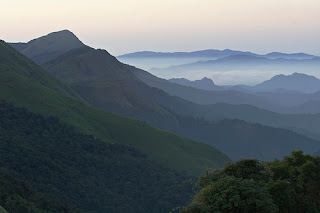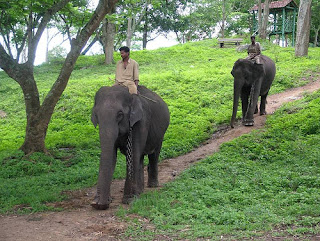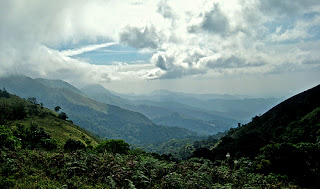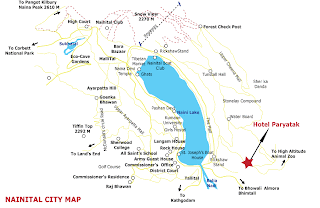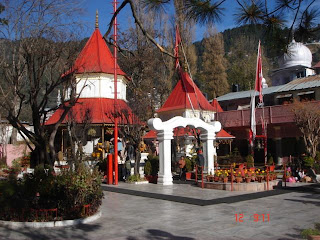The enchanting land of India is known for its mysterious, colourful and exotic tourist attractions. The tour of India is a unique opportunity to watch a beautiful blend of various religions, customs, festivals, sights and sounds. The country with a history dating back to 5,000 years, has the richness of culture and legend, which captivate the imagination of the visitor. The architectural gems like the temples, mosques, palaces, forts and monuments, offer an unmatched experience. In addition the geographically varied land of India is dotted with picturesque hill stations, waterfalls, lakes, rivers, lush green forests and wildlife animals. There are many places of tourist attractions in India, among the popular attractions include:
Lakshadweep:
Lakshadweep is one of the worlds most spectacular tropical island systems. Thirty- two sq. km of land spread over 36 islands surrounded by 4200 sq. km of lagoon rich in marine wealth. The precious heritage of ecology and culture is supported by an extremely fragile ecosystem. Committed to the cause of Eco tourism Union Territory of Lakshadweep has consciously followed a middle path between tourism promotion and environmental conservation. The Administration is carefully monitoring the environmental impact of coastal tourism and has taken steps to promote tourism in a way that is consistent with ecological concerns. As an effective strategy to avoid pressure on ecological environment, the efforts to promote tourism have been synchronized with the carrying capacity of the islands.
Though all the islands are endowed with the beauty of coral reef, sandy beaches, unpolluted and clear water and hospitable settings, most of these differ in terms of facilities and services offered. Some islands have been promoted for diving and water sports; still others have been developed so that people enjoy the charm of relaxation and natural enjoyment. Since the land is precious and scarce it is avowed policy of the Administration to relieve pressure on land and promote water based tourism. The motto being admires and not exploits that natural beauty.
Munnar:
Munnar - breathtakingly beautiful - a haven of peace and tranquility - the idyllic tourist destination in God's own country.
Set at an altitude of 6000 ft in Idukki district Kerala, Munnar was the favored summer resort of the erstwhile British rulers in the colonial days. Unending expanse of tea plantations - pristine valleys and mountains- exotic species of flora and fauna in its wild sanctuaries and forests - aroma of spice scented cool air - yes! Munnar has all these and more. It's the place you would love to visit - it's the place you would wish never to leave- so welcome - log on to munnar.com for all information on Munnar anytime, every time.
Darjeeling:
This list wouldn’t be complete without including this tourist destination. Starting from its humble beginnings as a cluster of villages, this was the first hill station established by the British. Located in the state of West Bengal, Darjeeling is famous for its natural beauty, tea production, trekking and awe inspiring views of Kanchenjunga ( 3rd highest peak in India)
Darjeeling is speckled with some interesting and must visit tourist attractions. Some of the remarkable places to visit in Darjeeling are Tiger Hill (gives an immense view of Peak Kanchenjunga during sun-rise), Zoo, Mahakal Temple, Singalila National Park (trekking destination), Buddhist monasteries and the Himalayan Zoo.
Along with places to see, Darjeeling offers you a range of things to do. For adventure addicts, there is mountain biking which is probably the best way to see this lovely hill station. Also a variety of trekking options along the Himalayan ridges on the Indo-Nepal border near Darjeeling. For catching the best views of Kanchenjunga, make a visit to the Shruberry Health Club. Also hitch a ride on the world famous Toy train and enjoy an unhurried way of looking at life.
For shopping addicts, the obvious best thing to buy is Darjeeling Tea which is world famous for its light taste and awesome aroma. Other noteworthy buys are local textiles, handicrafts and art. However a point to note is that the shopkeepers are more interested to cater to the foreign tourist rather than the Indian tourist (hmm colonial hangover? You bet!).
Summing it up, Darjeeling is a hill station with gives you a lot of options for places to visit, things to do and of course some awesome tea and remarkable views of Kanchenjunga. Add to it a ride in the famous Toy Train and this is an experience you will not forget soon. Darjeeling makes a compelling case for number 8 on list of best tourist places to visit in India
Cherrapunjee:
Cherrapunjee is locally and officially also known as Sohra. It is situated at a distance of 56 kms from Shillong. It is a “must see” destination for all tourists.
Cherrapunjee receives the highest rainfall in the country. The average rainfall is about 12,000 mm a year and the record for a single day was 2455 mm recorded in 1974 confirming it as the “Wettest place on Earth”. The wet town of Cherrapunji is located 4,500 feet above sea level. This is a place with ever-lasting beauty. The Mawsmai Falls are located very close to Cherrapunji and it is the 4th highest waterfall in India. They are located at a height of 1035 feet.
High above misty valleys and foaming rivers, ensconced in swirling clouds and perched on an escarpment, lies this extraordinary place of breathtaking beauty. A stunning location which earned Cherrapunji coveted entry long ago into the Guinness Book of World Records as the wettest place on earth, the place of heaviest rain where the rainfall can be recorded in feet rather than in millimetres.
Today, climatic changes have edged Cherrapunji out of the topmost ‘wet’ slot, but it still retains its pristine beauty, its unusual facets, the perpetual clouds, the perpetual mists…. Appropriately, Cherrapunji lies in the heart of the State of Meghalaya – the Abode of Clouds.
Daman & Diu:
This Union Territory of Daman and Diu and are governed from Delhi. The Daman-Ganga river divides the town in half. The southern part of the city is known as Moti(Big) Daman and the northern part known as Nani(Little)Daman.
Moti Daman is an old Portuguese area where the government buildings and old churches are located. A large wall surrounds it. And Nani Daman consists of most of the hotels of the city. The roads in Daman Diu are well maintained. Daman lies about 15kms off Vapi along the Mumbai Ahmedabad highway.
There are 39 resorts & hotels listed for Daman & Diu. Cidade De Daman seems to be a popular place to stay. Places to visit in Daman Diu are the Church of Our Lady of the Rosary and Se Cathedral, Fort at Moti Daman, the Light House, Nani Daman Fort, St. Jerome’s Fort and Beaches of Devka and Jampore.
Kodaikanal:
Yet another awesome tourist place in South India makes it to our list. For it’s hard to pronounce name, Kodaikanal is one of the most peaceful and popular hill-stations situated on the Palani Hills of Tamil Nadu, about 120 kms away from Madurai. Originally served as a refuge for the British Bureaucrats to escape from the hot plains, it has now blossomed into a popular summer retreat.
In Tamil language Kodaikanal name means “The Gift of the Forest”. Kodaikanal has many places of interest. Everywhere you go, you are surrounded with enchanting waterfalls and scenic beauty which sometimes seem straight out of a dream.
Kodaikanal has beautiful tourist attractions which are sure to wow you. The most popular one is Kodaikanal Lake (star-shaped man-made lake), bicycles and horses are available for rent at this lake to ride around the lake), Bryant Park or the Botanical Garden, Coaker’s Walk (1 km pedestrian path running along the edge of steep slopes on the southern side of Kodai), Bear Shola waterfall, Green valley view, Shembaganur museum and Guna caves are some of the other major attractions of Kodaikanal.
This quaint little hill station nestled in Tamil Nadu might not have the publicity Shimla and Manali enjoy, but is sure to give you cool climates, breathtaking scenery, lush greenery and views which are sure to stay with you for a lifetime. All this makes it a worthy entry at number 7 for the best tourist places in India
Tarkali Beach:
Situated in Sindhudurg in Southern Maharashtra, Tarkarli beach has clear waters that allow one to snorkel and scuba dive. The beach is known for its pure shores with emerald green ocean waters, so clear you could see upto 15 feet deep. The places to visit here are Sindhudurg Fort,Devbag Beach and the Backwaters.
The Malwani cuisine is quite famous here and one can have fresh fish or prawns in a thick coconut curry base. The MTDC resort is the only place of accommodations here which has 20-odd cottages on the beach front.
This place though, has been spotted by the international luxury cruise liner Hebridean Spirit and the State’s Deccan Odyssey, its largely unknown by our country people. Maybe because of the substandard treatment given to our people. There have been bad reviews about double standard treatments given to the guests in the resorts.
Wayanad:
Yet another unexplored place in Kerala, Wayanad is one of the northern districts of kerala, on its border with Karnataka. It is hilly country with a huge swathe of plantations & estates (particularly coffee estates). This mountain district is in many ways the most picturesque in the state, with its rolling hills covered with tropical rainforest.
Wayanad also contributes richly to its fortunes, with its flourishing cultivation of many spices, and also Tea, Coffee and Cocoa. Wayanad is situated at a height of 700 to 2100m above sea level with temperatures ranging from 12 to 25 degrees centigrade.
This district also has the added advantage of linking Kerala with the golden triangle of South India : Bangalore, Mysore and Ooty. Kalpetta town is the center for all the sight seeing places. An ideal place for trekking and other adventure activities.
Its famous wildflife sanctuary has got everything from exotic flora,birds and a collection of reptiles. The best time to visit is between the months of June to October. There are a number places to visit in Wayanad like Phookat lake, Eddakal caves, Kuruvadweep and Chembara Falls.
Agra-City of Taj-The symbol of Love:
A city that has three of the UNESCO World Heritage Sites is hard to keep out of this list. Located at the banks of Yamuna River, Agra is about 200 kms away from New Delhi. From its early references in the Mahabharata to being the capital of the Mughal Empire, Arga is a city that shines with examples of intricate Mughal Architecture wherever you look.
The Taj Mahal probably is best described by Rabindranath Tagore as “a teardrop on the cheek of eternity”. Attracting thousands of tourists in a day, the Taj Mahal was built by the Mughal emperor Shah Jahan for his beloved wife Mumtaz Mahal. Built in 23 years with the help of over 20000 workers, it is so perfectly designed and constructed that it looks similar from all its four sides. The Quranic inscriptions on its four entrances are carved in such subtle increase in size that may appear to be of the same size from top to bottom. Craftsmen from Italy and Persia were hired by Shah Jahan to help design his tribute of love to his wife. These and many more reasons make this monument a crowning achievement in Mughal architecture.
Apart from the awe inspiring Taj Mahal, there are many other things to do in Agra should you get the time. Other tourist attractions worth visiting are the Agra Fort, Fatehpur Sikri, Itmad-Ud-Daulah’s Tomb and Jama Masjid. If you are in the mood for a bit of shopping, you can buy various stone products, jewelry and other items. However you should be careful about being ripped off and always should bargain hard since some items can be fake. For the foodies, must have are the delicious variety of Chats and the famous pethas of Agra.
As a city, Agra might be a bit on the disappointing side with its pollution, touts and hawkers. But from a perspective of its historical significance, amazing monuments and tourist attractions, no trip to India is complete without visiting the Agra. Also it’s close proximity to the capital of India make it an ideal weekend getaway from Delhi. All this and many more reasons make Agra number 9 on our list of best places to visit in India.
Jaipur / Udaipur:
Jaipur is also popularly known as the Pink City, is the capital of the Indian state of Rajasthan. Jaipur is a very famous tourist and education destination in India.
Lots of people flock to Jaipur to view the various forts and monuments in Jaipur which reflect its glorious past. Tourism is a significant part of Jaipur’s economy. Some of the world’s best hotels are located here.
Forts & Monuments
- Hawa Mahal
- Amber Fort
- Jaigarh Fort
- Nahargarh Fort
- City Palace
- Jantar Mantar
- Jal Mahal
- Rambagh Palace
- Chandra Mahal, The City Palace, Jaipur
- Diwan-e-Aam, City Palace
- Central Museum, (Albert Hall Museum)
Goa:
Goa is Famous for its pristine beaches, infact 90% of all the tourism in Goa happens only for its beautiful beaches in Coastal Areas. Goa has two main tourist seasons: winter and summer. In the winter time, tourists from abroad (mainly Europe) come to Goa to enjoy the splendid climate. In the summertime (which, in Goa, is the rainy season), tourists from across India come to spend the holidays.
In 2008 there were more than three million tourists reported to have visited Goa, more than half million of whom were from Foreign visitors. Infact, many foreigners have made Goa as there home for its laid-back and relaxed lifestyle !
Kashmir:
Kashmir was once called Heaven on Earth, and once of the most beautiful places in the world. However, in last couple of decades, terrorism has faded its charm – A place home to Himalayan Ranges.
The State of Jammu & Kashmir has main three geographical regions known as “The Lesser Himalayas” or the “Jhelum Valley” (Kashmir), “The Inner Himalayas” or “The Indus Valley” (Ladakh & Frontier areas) also called “Trans-Himalayas”, and “The Outer-Himalayas” or “The Southern mountain range” (Jammu). The area of Jammu & Kashmir is 2, 22,236 square kilometers.
Kanyakumari:
Though there are several places of tourist-interest in the town and district, Kanyakumari is especially popular in India for its spectacular and unique sunrise and sunset. The confluence of three ocean bodies – the Bay of Bengal, the Indian Ocean, and the Arabian Sea – makes the sunrise and sunset even more special. On balmy, full-moon evenings, one can also see the moon-rise and sunset at the same time – on either side of the horizon.
Kerala (Backwaters):
Kerala, situated on the lush and tropical Malabar Coast, is one of the most popular tourist destinations in India. Named as one of the "ten paradises of the world" and "50 places of a lifetime" by the National Geographic Traveler magazine, Kerala is especially known for its ecotourism initiatives, Beautiful Backwaters and Alternative healing massages.
Delhi:
Delhi, Capital of India has many attractions like mosques, forts and other monuments that represent India’s history. The important places in Old Delhi include the majestic Red Fort. New Delhi on the other hand houses many government buildings and embassies, apart from places of historical interest.
The Qutub Minar, Red Fort and Humayun’s Tomb have been declared World Heritage Sites.
Ajanta Ellora :
Ajantha & Ellora are 28 – 30 rock-cut cave monuments created during the first century BC and 5th century AD, containing paintings and sculptures considered to be masterpieces of both Buddhist religious art and universal pictorial art.
The caves are located just outside the village of Ajantha / Ellora in Aurangabad district in the Indian state of Maharashtra.
Since 1983, the Ajanta & Ellora Caves have been a UNESCO World Heritage Site.
Mysore:
Mysore is a tourism hot spot within the state of Karnataka and also acts as a base for other tourist places in the vicinity of the city. The city receives the maximum number of tourists during the period of the Dasara festival when festivities take place for a period of 10 days. One of the most visited monuments in India, the Ambavilas Palace (also known as Mysore Palace) is the center of the Dasara festivities.
Mumbai:
Think Mumbai and you think Glitz, Glamour, Movies, Fashion, Finance and of course Bhel Puri. Probably one of the most cosmopolitan cites in India, Mumbai is as diverse an experience as you can imagine. Dotted with impressive old monuments like Chhatrapati Shivaji Terminus, architectural masterpieces like the splendid Taj Mahal Hotel and the famous skyscrapers which dominate the Mumbai skyline; this is a city full of surprises and a tourist’s delight For the foodies, Mumbai boasts of some amazing street food like Pav Bhaji, Bhelpuri, Vada Pao and Pani puri. Although the hygiene standards might not be top class, the taste of the street food makes it worth a try. In case you feel adventurous and have a strong stomach, head over to Khau Galli where you are sure to find some of the best street foods in Mumbai.
In terms of tourist places in Mumbai, popular destinations include The Gateway of India, Marine Drive (semi-circular shaped natural bay along the sea coast), Hanging Gardens, Juhu Beach, Ajanta Alora Caves, Elephanta Islands and Haji Ali Dargah (Mosque). Also, if you are a shopaholic, check out the Colaba Causeway, Flora Fountain and Churchgate and the bazaars near Jyotiba Phule Market. And of course remember to bargain hard.All said and done, Mumbai is the city that dazzles with its combination of old world monuments, futuristic skyline, Bollywood Movies, great shopping avenues, tourist destinations, pristine seaside and a lot more. The city of dreams, where anything seems possible makes it to our number 6 on the best tourist places in India.
The Andaman and Nicobar Islands:
This tourist destination might not be one everyone’s list and also off the beaten track. However that does’nt means it should be missed. The Andaman and Nicobar Islands are a group of islands which lie in the Bay of Bengal. The Andaman is separated to the north while Nicobar separated towards the south. Both the islands have been separated from Thailand and Burma by the Andaman Sea. Although these islands are one of the remote places on the planet, their beauty makes them a must visit destination.
Initially the islands were populated mainly by the local people who comprise of a bunch of aboriginal tribes some of which are totally cut off from the world. Port Blair does not have a glory past where it was used as a jail for rebels and freedom fighters by the Britishers. However contrary to that gory detail, the Andaman and Nicobar islands have some of the most beautiful beaches, crystal clear waters and a good list of things to do along with places to visit.
Some of the places to see in these islands are the British colonial buildings in Port Blair (including the notorious Cellular Jail) and the World War II bunkers (awesome!). Also if you are a nature fan, check out the Neil Island which has lush green forests and pristine sandy beaches. But you shouldn’t leave these islands before having a peek at India’s only active volcano at the Barren Islands (always smoking!)
For people who love water sports, the Andaman and Nicobar Islands have a range of activities like Scuba diving, Snorkeling, Surfing. Also a must do is to see the coral reefs through a glass bottom boat at Jolly Buoy Island. If you are a land loving homo sapient, there are Camping, Trekking options as well.
The Andaman and Nicobar Island are indeed a very interesting tourist destination. They might not by your typical tourist destination but their asset lies in the un spoilt beauty, peace and quiet as well as a chance to see the only active volcano in India. Although our number 10 is an unconventional choice, we love it for this very reason. The Andaman and Nicobar islands give you a chance to go off the beaten track and experience awesome coastal tourism.






















